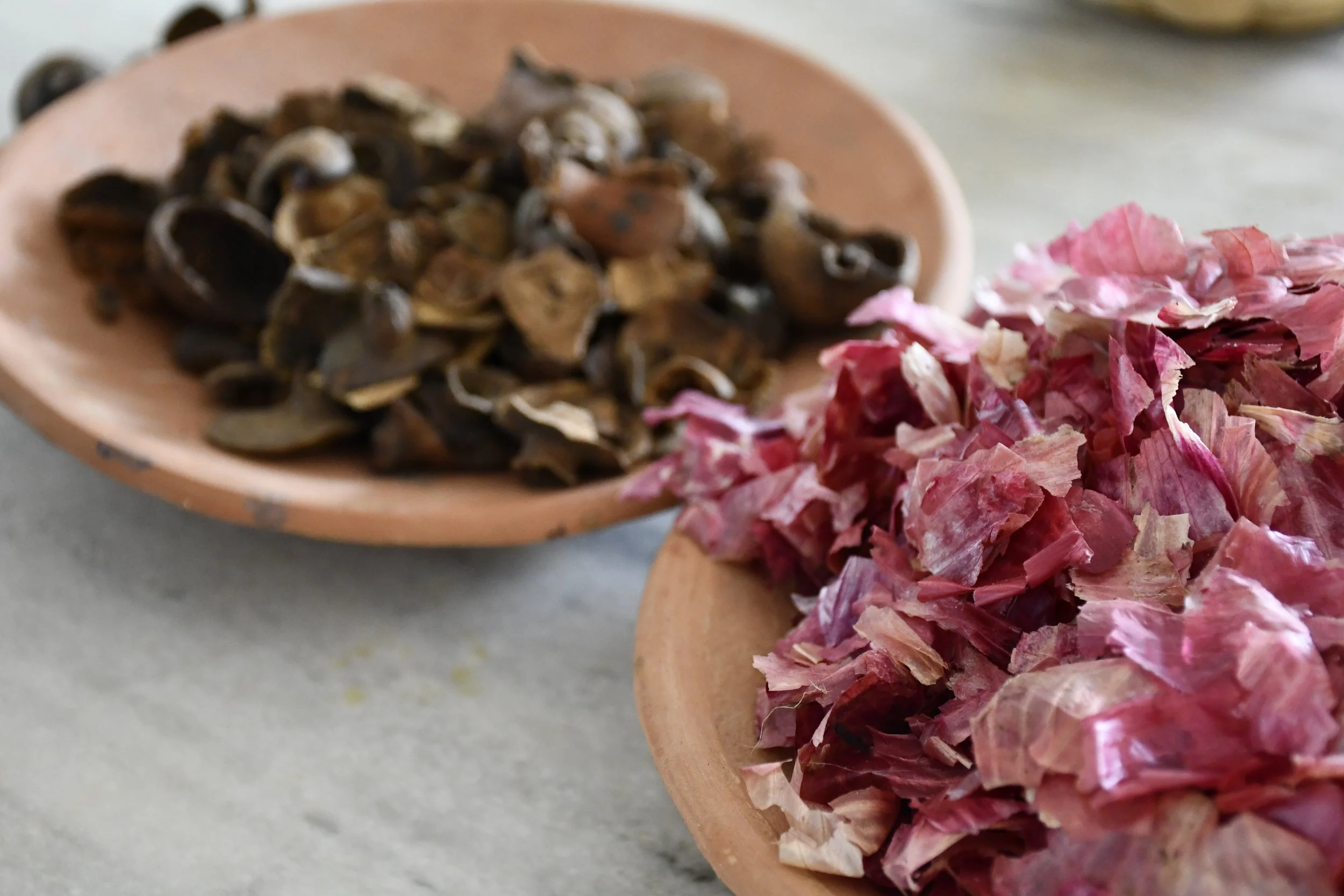08/10/2022
Before the 19th century and the synthesising of chemical pigments in laboratories, dyes for textiles were extracted from a range of natural ingredients like flowers, leaves, bark, seeds, minerals and yes - everyday raw food items.
Dyeing with organic kitchen waste has a double advantage of effectively minimising everyday household waste and bringing down the cost of natural dyes by recycling what we already have. With a few simple steps, common kitchen scraps like walnut hulls, pomegranate peels and onion skins can be put to good use to hide fading and stains on an old, well-loved t-shirt or experiments with tie-dye to create your own unique textiles for the home.
Because of how accessible it is, dyeing with kitchen waste is a wonderful introduction to working with natural dyes.
In a recent workshop at Nila House, we worked on dyeing with onion skins and pomegranate skins. Here, we share a quick note on the recipes along with the basic steps to keep in mind for your DIY dye experiments.
WHAT YOU WILL NEED
Dry onion skins and pomegranate skins: Collect your kitchen cast-offs and dry them daily for a week. If using onion skins, collect only the dry, papery outer skin. Any excess moisture will be a poor dye source and prone to mould. Ask your local fresh produce grocer to save you some peels!
Alum: This is easily available at a general store; the Hindi word for it is phitkari.
Textile blanks: Natural dyes work best when used with natural fibres, so all the more reason to avoid synthetic textiles.
Cotton thread if you would like to tie-dye.
Muslin cloth to strain the dye concoction.
Container to collect the dye-stuff; a 5L glass jar or beaker works well.
Pan to boil the dye bath.
Access to a gas stove or induction plate.
Access to running water.
THE DYE PROCESS
Preparing your fabric: Soaking and scouring.
Soak the fabric or garment in a mild soap solution for a few hours in room temperature water.
Rinse thoroughly to remove all the dirt and impurities in the fabric.
We recommend soaking the fabric overnight. The longer you leave your fabric/garment to soak, the more the fibres will open up allowing the dye to catch onto the fabric.
Prepare your mordanting solution by adding of alum to a 1 L of fresh water in a ratio of 8% of the weight of the fabric.
Soak the fabric in the mordanting solution for 30 minutes. The mordanting solution helps ensure colour-fastness. Pomegranate is rich in tannin and does not need extra mordanting.
Preparing the dye-bath
Boil the peels in water, in a peels-to-water ratio of 1:10, and leave it on a simmer for 1.5 hours.
Strain the dye concoction using a muslin cloth as a sieve and collect the dye water in a wide-mouth vessel or pan for dyeing.
Dyeing
Heat the dye-bath a second time (add in more water in case it looks like it needs diluting) add gently add in the fabric
Stir the dye bath regularly to avoid patching
If you would like to make a tie-dye piece, use the cotton thread to create resists by tying knots in patterns across the fabric. This must be done before adding the fabric to the dye bath. Cotton thread is highly absorbent so you will need to tie multiple laters.
Watch out for steam burns. Use a long, light wooden stick to gently stir the fabric in the dye bath for 25-30 minutes.
Remove the fabric from the dye bath when you are satisfied with the colour; remember that natural dyes lighten so look for a colour a few shades darker than what you have aimed for.
Rinse the fabric under cold running water; remove the resists if you are working with tie-dye.
Set out to air dry in the shade.
RESULTS
Dyeing cotton fabric with generic purple onion peels should give you a colour ranging from green-ish yellow to a fresh, pale green and pomegranate skin should give you a beautiful, golden yellow.









